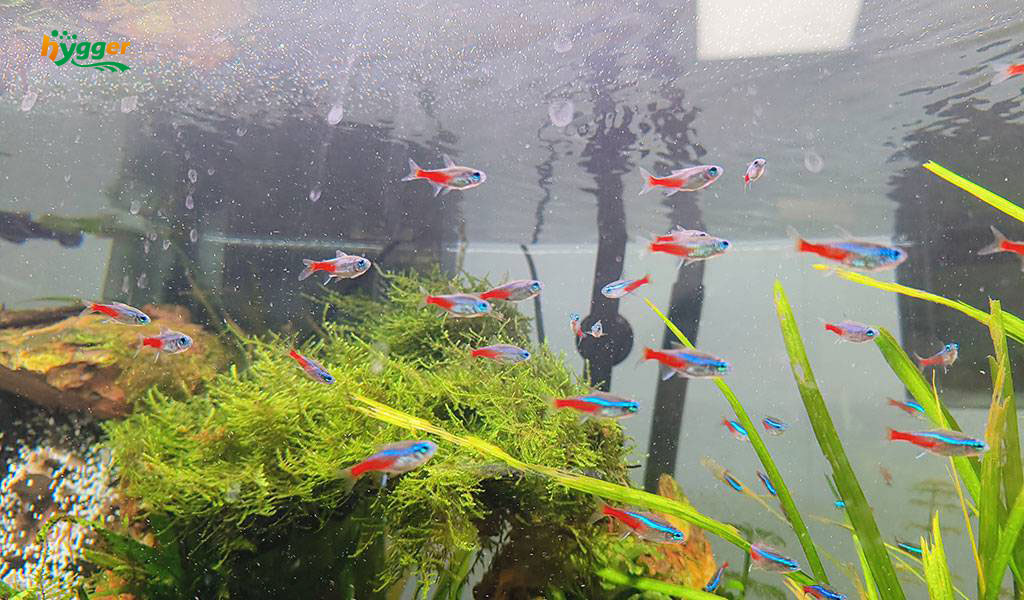Featuring fascinating colors, shapes, and behaviors, freshwater tropical fish bring life and vibrancy to your aquariums. In this guide, let’s delve into some interesting facts about tropical freshwater fish.
Content Table
Do tropical fish yearn for snow
Tropical fish are commonly found in warm waters, so it is unlikely that they have an innate yearning for snow. Also, specific physiological and behavioral adaptations enable tropical fish to survive and thrive in warm waters. They rely on stable warm temp to maintain metabolism, digestion, and overall health. If exposed to cold temp, they are going to face stress, weakened immune system, or even illness or death.
How to breed tropical fish in winter
Keeping tropical fish in winter can be challenging, because cold weather, causing water temperature fluctuation can be a threat to fish growth. In this segment, let’s learn some tips to breed tropical fish in winter.
Monitor water temperature
A stable and warm water temp is vital for tropical fish. Typically, the water temp should be kept in the range of 75-80℉(24-27℃). Hence, an aquarium heater and an aquarium thermometer may be necessary for tropical fish tanks in winter.
An aquarium heater helps to maintain stable water temp, while a thermometer can check real-time water temperature. But if your heater has a built-in thermometer, it is viable not to add a thermometer.
Insulate your aquarium
Insulating your aquarium is helpful to stabilize water temp and prevent heat loss, especially in case of power loss. You can place insulating material around the sides and back of the aquarium. For instance, foam and polystyrene sheets. But do not completely cover the top of your aquarium, allowing for gas exchange.
Avoid drafts and cold spots
Keep the aquarium away from windows, doors, or areas with drafts. Cold drafts can cause temperature fluctuations and stress the fish. Also, avoid placing the tank near heating vents or radiators, as the direct heat can be harmful.
Adjust lighting
Due to the shorter daylight hours in winter, adjustments to lighting hours would be required. Generally, you can keep the light on for around 10–12 hours per day. It helps to maintain a consistent light cycle for tropical fish.

Monitor water quality
Keeping great water quality is essential for the health of tropical fish. Typically, regularly test the water parameters, such as pH, ammonia, nitrite, and nitrate levels. Moreover, routine water changes can remove waste and improve water agitation. Each time you change water, cold tap water should be avoided. You should warm the water to room temperature.
Observe fish behavior
Keep a close eye on your fish’s behavior and appearance. Once you notice signs of stress, such as decreased activity, loss of appetite, or unusual swimming patterns. Find the root cause immediately and take measures to deal with it.
How often to feed the tropical fishes
Commonly, twice or three times each day is viable. But, actually, the feeding frequency can be determined by fish species, age, size, behavior, and their needs. In this part, let’s take a look at some pointers.
Feeding amount
Feeding smaller meals each time rather than a large amount of food. Just keep in mind – small portions for multiple times.
Fish size and age
Young fish with higher metabolisms require more frequent feeding. As they grow up, you can gradually reduce the feeding amount and frequency.
Fish behavior
Consuming food fast within a few minutes may indicate that fish are hungry and need more food. However, if there is uneaten food after feeding, it may mean overfeeding, then you can reduce the feeding amount or frequency.
Balanced diet
A varied and balanced diet prevents nutrient deficiency and promotes overall health. The available food includes worms, brine shrimp, high-quality commercial fish flakes or pellets, frozen, freeze-dried, or live foods, etc. Occasionally, you can feed tropical fish some vegetables.
The smallest tropical fish
To begin with, we will list some smallest tropical fish.
- Endler’s Livebearer (Poecilia wingei): a popular choice for nano aquariums.
- Ember Tetra (Hyphessobrycon amandae): striking red-orange coloration adds a splash of brightness to any aquarium.
- Celestial Pearl Danio (Danio margaritatus): incredibly small, about 1 inch.
- Pygmy Corydoras (Corydoras pygmaeus): peaceful bottom-dwelling fish and generally kept in small groups.
- Least Killifish (Heterandria formosa): peaceful and adaptable to various water conditions.

Next, we will cover some interesting facts about the smallest tropical fish.
Nano tank delights
Due to their size, the smallest tropical fish are often well-suited for nano tanks or small aquariums. The compact body shapes make them ideal choices for hobbyists looking to create a miniature aquatic world.
Popular in community tanks
Most of the smallest tropical fish are peaceful and compatible with a wide range of tank mates. This makes them popular in community tanks, where they can coexist harmoniously with other species.
Fascinating behavior
Despite their small size, the smallest fish can exhibit intriguing behavior. From courtship displays to territorial interactions, they showcase a diverse repertoire of behaviors that highlight their unique characteristics.
Fast breeding
Some of the smallest tropical fish, such as Endler’s Livebearers, are known for their prolific breeding capabilities. They can reproduce at a rapid rate, leading to growing populations in well-maintained aquariums.
Schooling wonders
Many smallest tropical fish are known for their schooling behavior. Like, Pygmy Corydoras (Corydoras pygmaeus). They gather in large groups, creating a mesmerizing display of synchronized swimming and coordinated movements.
Summary
Exactly, tropical fish include freshwater and saltwater species. For beginners, freshwater tropical fish are excellent options. For instance, neon tetras and harlequin rasboras. However, saltwater tropical species are harder to keep and need more maintenance. Like emperor angelfish and tomato clownfish.
If you want to learn more about tropical fish, you can go to:


Leave a comment